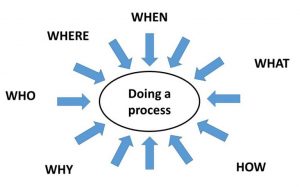Principle: P1 of fitness for purpose
The systems models should be of appropriate quality as to be fit for purpose. But check that the purposes include all purposes i.e. not just function but risk, safety, affordability, sustainability, resilience etc.
Principle: P2 of proper duty of care
A duty of care is a legal obligation to act to a reasonable standard. Not to do so is negligent. All players should have clearly defined appropriate responsibilities and be clearly accountable. Are the players competent to carry out their roles and functions?
Principle: P3 of integrating people, purposes, products, old processes to create better performances
Do the processes include:
a) Firming the foundations FF by:
FF Design – being curious, open minded, identifying issues,
FF Build – developing the vision, clarifying values,
FF Operation – reflecting, learning, understanding the models,
b) Strengthening the structures by:
SS Design – collaborating, creating relationships, defining responsibilities,
SS Build – building networks, getting advice, solving problems,
SS Operation – improving relationships, adapting,
c) Working well by:
WW Design – learning from evidence,
WW Build – being resourceful & resilient in making decisions,
WW Operation – creating and enhancing quality?
Principle: P4 of sufficient structure
Are the systems model processes:
sufficiently discriminatory – all terms are as distinct and as clear as required,
sufficiently consistent – the content of the model are compatible and not self-contradictory,
sufficiently cohesive – the content of the model are integrated so that it all hangs together,
sufficiently concordant – conflicts and differences of all kinds are identified with procedures to resolve or manage them?
Principle: P5 of sufficient content
Are the systems models:
balanced between contrasting pairs such as detail and overview, risk and opportunity etc.,
sufficient for the stated purposes i.e. contain the requisite detail,
necessary – i.e. do they contain all that must be contained;
locally important,
of requisite variety – content is widely applicable and appropriately diverse?
Principle: P6 of control
Are the processes:
being guided towards desirable outcomes
such that risks are being managed
from the uncertainties being identified and monitored
and the lessons being learned?
Principle: P7 of evidence
Evidence is an attribute of the ‘what’ of a process:
evidence is gathered both quantitatively and qualitatively such that timely decisions and interventions are made to keep processes on track towards purposeful outcomes





